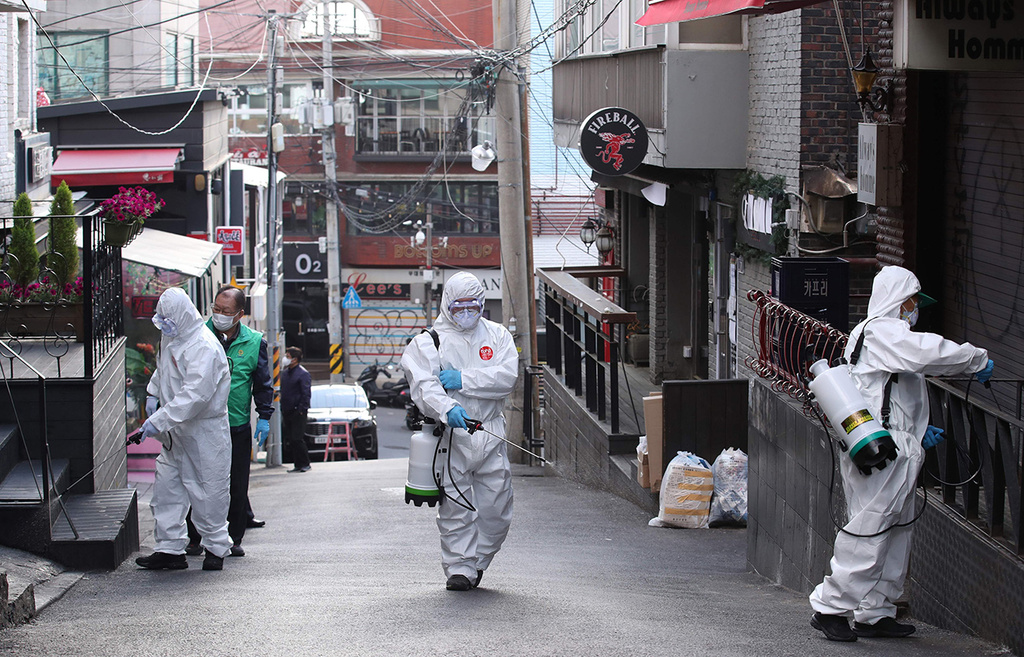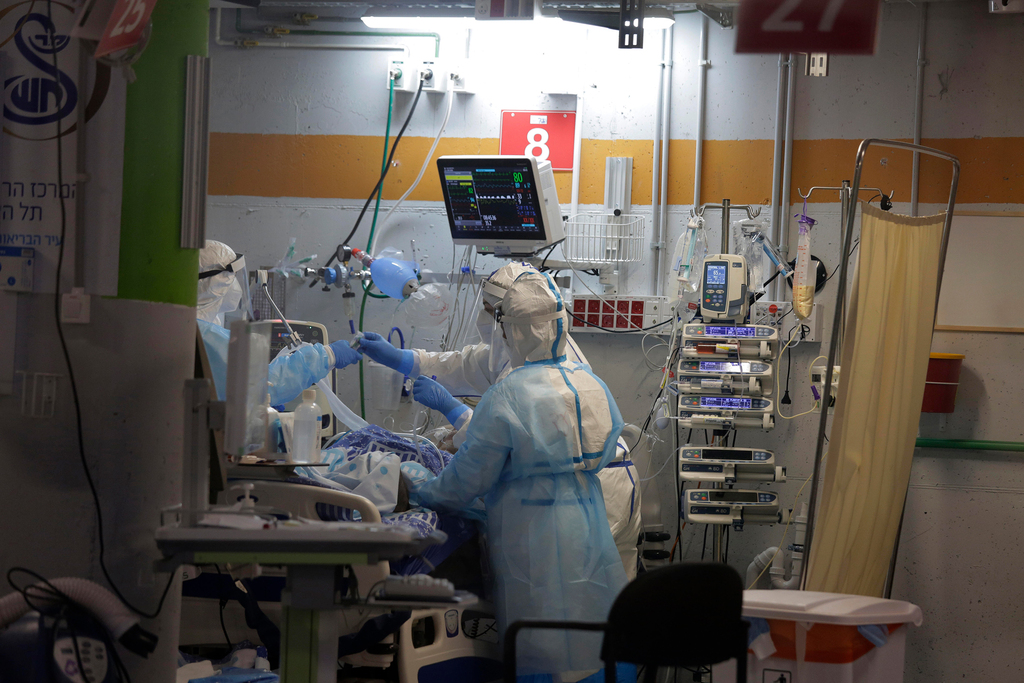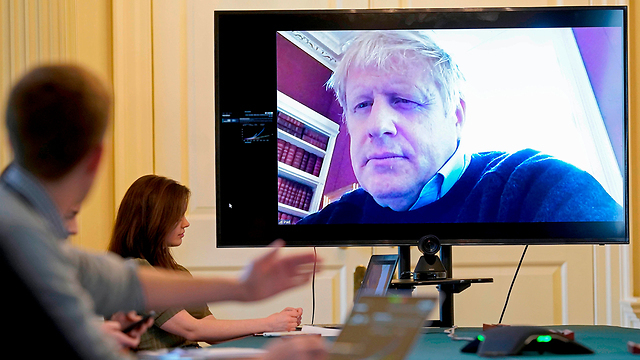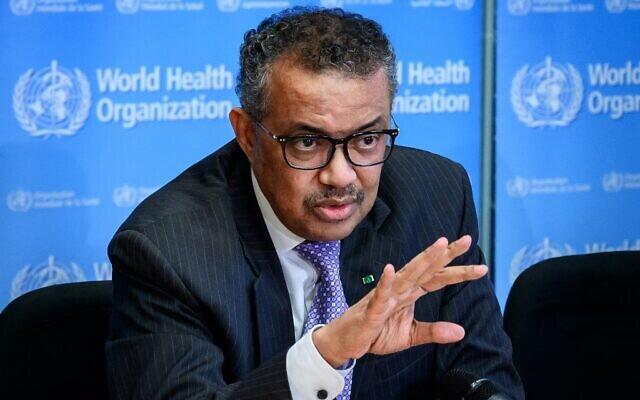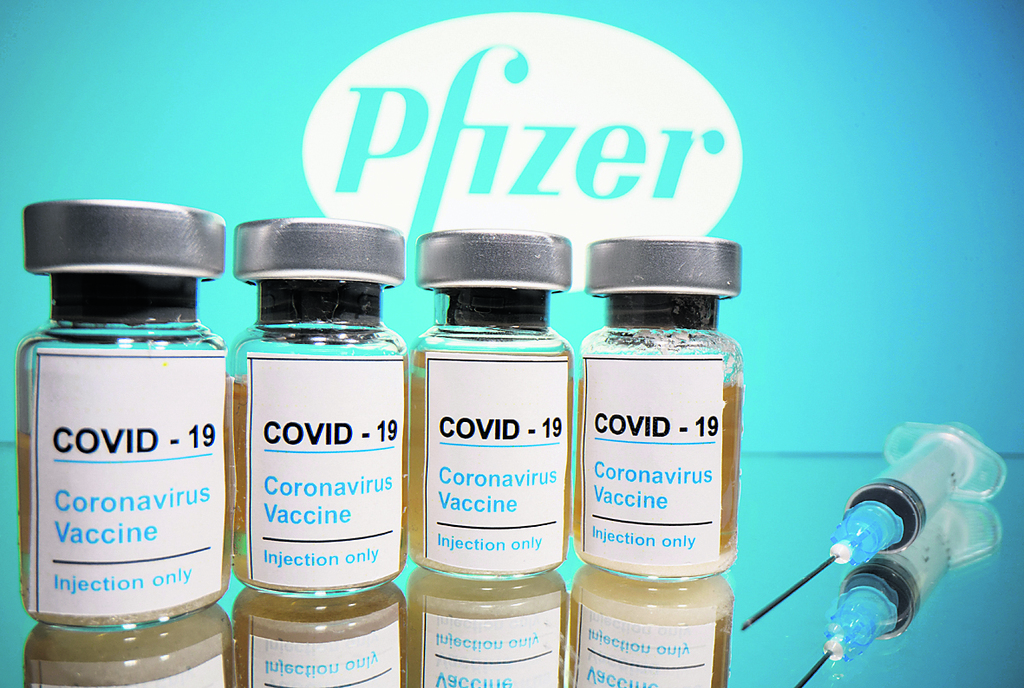It has turned our lives on their heads completely, killed over 1.3 million people, infected hundreds of millions with most never knowing and eviscerated the global economy - but despite a glimpse of light at the end of the tunnel, the road to normalcy is still long.
It has been one year since the first person infected with the novel coronavirus was diagnosed, and amid hopeful news of powerful and capable vaccines being developed at a breakneck pace - it is a good opportunity to look back at the harshest pandemic humanity has faced since the Spanish Influenza Outbreak over 100 years ago.
November 17, 2019: Chinese government data shows this as the date on which the first person is diagnosed with coronavirus, which at the time still did not have a name. It was a month and a half before China announced to the world that there was a mysterious outbreak of a new flu-like disease in the city of Wuhan, according to the South China Morning Post.
According to reports, the first was diagnosis was a 55-year-old man from Hubei Province, whose capital is Wuhan. It is yet unclear whether this man was actually Patient Zero for the disease.
December 31, 2019: Weeks after the alleged first case is diagnosed, doctors in Wuhan treat more and more patients suffering from high fever, a cough and various other reparatory symptoms.
Before the end of 2019, health authorities in Wuhan report that dozens of people are ill with this disease, whose source is "unknown."
January 1, 2020: Wuhan authorities shut down and disinfect the city's Sea Food Market, which has been linked to the disease's first cases. During the first months of the pandemic, the market and the exotic animals it sold for edible needs have become infamous - though experts are now unsure that it really was the source of the outbreak.
Scientists speculate that the novel coronavirus passed to humans from bats or through a different conduit like pangolins, but the market could have served as a source of an outbreak and not as the first transmission from animals to people.
On the same day, eight doctors from Wuhan are arrested by authorities for trying to warn of the pathogen. The health workers first suspected that this was was a renewed outbreak of the SARS virus that spread across Asia in the early 2000s, due to similar symptoms.
One of the doctors arrested, Li Wenliang, caught the virus and died from coronavirus-related complications a month later.
His death caused uproar within and outside China, drawing attention to the negligence in handling the outbreak on part of the Chinese authorities - who reportedly even tried to cover up the disease completely at the beginning.
January 7: Chinese doctors determine the novel virus is part of the Corona family, which includes SARS and the common cold.
January 11: A 61-year-old man who was a frequent shopper at Wuhan's Sea Food Market becomes the first recorded fatality from the disease.
January 13: Thailand reports the first confirmed case outside China. Over the coming days, more countries report their first infections including Japan, South Korea and the United States. Most new infections are deaths are still centered in China.
January 23: China orders a lockdown for Wuhan's 11 million residents, a closure that later spreads to the entire Hubei Province and other Chinese cities.
At this stage, the world's attention becomes more and more aware of what is going on in China, while WHO stresses their belief in the Chinese authorities and their response. Only 17 people have died from the disease, with 570 infected.
January 30: WHO declares an international "emergency," but has yet to define the outbreak as a pandemic. People around the world become more worried about the new disease, and despite Chinese protests, U.S. President Donald Trump an entry ban from China to the United States.
February 2: A 44-year-old Chinese national living in the Philippines becomes the first recorded death from coronavirus outside China. At this point, 360 have succumbed to the disease, almost all within China.
February 5: The Diamond Princess cruise ship becomes the first serious outbreak outside China, with its 3,600 passengers put in quarantine while anchored in Japan.
The number of new cases on the vessel slowly climbs, with thousands of passengers and crewmembers eventually found to be infected. Japanese authorities are slammed for their response, with many alleging that the quarantine only worsened the situation, causing more people to fall ill.
Among those infected are several Israelis, who are repatriated under strict precautions.
February 11: The novel coronavirus finally receives its official name: COVID-19, an acronym for Coronavirus Disease 2019.
February 19: Iran announces its first two infected patients, who later that day are proclaimed dead. From the Islamic Republic, the pathogen spreads at blinding speed to other parts of the Middle East - including Afghanistan, Iraq, Bahrain, Kuwait, Oman, Lebanon and the UAE.
February 23: Although France is the first to report a European death from the disease (a 44-year-old Chinese tourist on February 14), Italy quickly becomes the more severe infection hotspot on the continent.
On this day, Rome announces a lockdown of 10 cities in the northern Lombardy province. At the time, only 150 infected were diagnosed in the region, but the pathogen spreads quickly across northern Italy. Soon stories emerge of Italian doctors collapsing under the massive surge in cases and having to choose which patients they help to live and which ones are left to die.
February 27: Israel's Health Ministry reports the country's first infection - an Israeli who returned from Italy.
March 8: The number of dead in Italy climbs into the hundreds and Prime Minister Giuseppe Conte expands the lockdown to other provinces. A day later the closure becomes nationwide, the first outside China.
March 11: WHO officially designates the outbreak as a pandemic. U.S. President Donald Trump declares a national state of emergency and bans entry into the country by Europeans. A week later, EU leaders close their own borders.
March 19: Israel enters its first nationwide lockdown in an effort to stop the spread of coronavirus. As Israel and other nations around the world enter lockdown, China seems to be starting to control the virus, with Chinese authorities that day reporting zero new cases.
March 24: The Tokyo Olympic Games are postponed to 2021, becoming the only fourth time in their history to be canceled (the other three being 1916, 1940 and 1944).
British Prime Minister Boris Johnson announces a national lockdown and India also declares similar measures. The sudden implementation of travel restrictions in India causes many workers to become stranded far away from their homes, with some walking hundreds of kilometers back to their towns and villages.
March 26: The United States becomes the most infected country in the world, with over 81,000 cases and over 1,000 dead at the time. This is a grim title the nation holds to this day.
March 27: Democrats and Republicans push through a $2 trillion coronavirus aid package, the largest of its kind in American history.
Other such outlines will be approved, but as the U.S. elections loom, talks of further aid are scraped due to partisan bickering.
March 2: Over one million people have become infected with COVID-19 worldwide and over 50,000 people have died. Millions have become unemployed due to the restrictions implemented to mitigate the spread of the disease.
In the final week of March, 6.6 million Americans have registered for unemployment, the worst week in American history since 1982.
April 6: British PM Boris Johnson is with COVID-19 and is taken to a London hospital to receive treatment. On April 12, the 55-year-old Johnson reveals that his health was far worse than people thought.
"It could have ended differently," he says. "The doctors saved my life, there is no doubt."
April 14: The IMF warns the world economy will enter a recession unseen since the Great Depression that began in 1929. They warn the global economy could shrink by 3%.
April 17: U.S. President Donald Trump backs protests against the lockdown measures, especially those in states governed by Democrats.
He also demands the immediate reopening of the economy and makes claims his opponents say are hampering the efforts to stop the disease. A week later, Trump will suggest coronavirus patients could inject themselves with disinfectant.
May 13: Dr. Mark Ryan, a senior WHO official, warns coronavirus might "stay with us forever."
"The virus might never go away," he says.
May 22: Brazil becomes the second most infected country in the world, with over 330,000 confirmed cases. Brazilian President Jair Bolsonaro continues to play down the virus, calling it a "little cold."
Severe outbreaks are reported across South America in Peru and Chile. That week the U.S. will report its 100,000th coronavirus fatality.
May 26: Israel begins to exit its first coronavirus lockdown. Prime Minister Benjamin Netanyahu urges Israelis to "go and have fun."
June 28: The world surpasses 500,000 dead and 10 million infections from COVID-19.
July 7: President Donald Trump announces his intentions to pull the U.S. out of WHO. Brazilian President Bolsonaro becomes infected with the virus.
12 View gallery
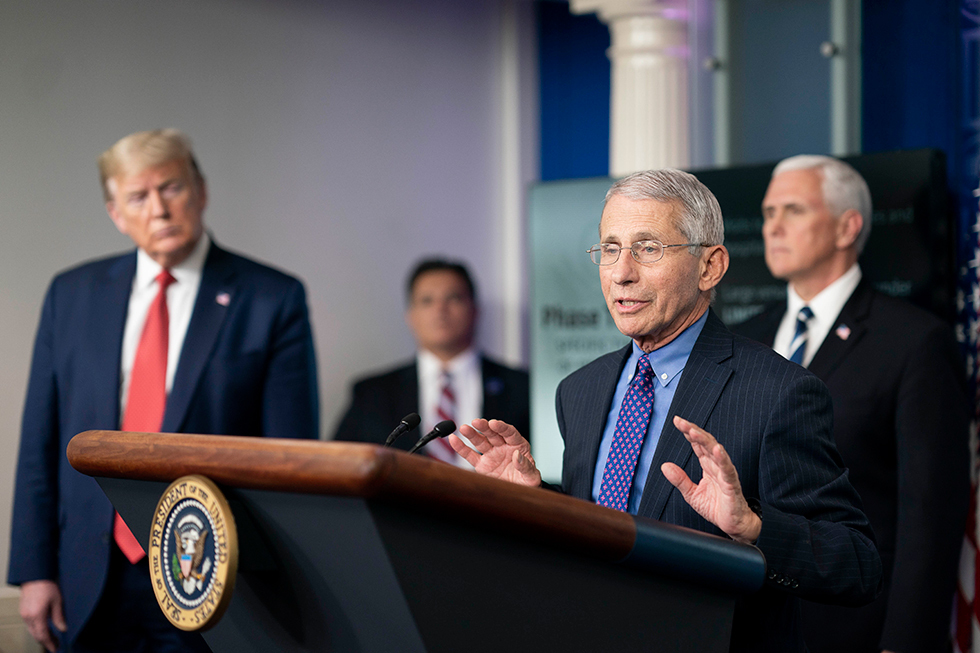

U.S. President Donald Trump looks on as Dr. Anthony Fauci, the head of the National Institute of Allergy and Infectious Diseases, addresses the media
July 10: The U.S. experiences a second wave of infections, with a record 68,000 daily cases. The country's infectious disease expert Dr. Anthony Fauci insists the country is still in the midst of the first wave. Infections spread to the southern and western parts of the U.S., when during March and April most were focused in urban centers along both seaboards.
July 17: Israel begins to experience a second wave of infections, with the government introducing a series of restrictions, but not pushing for a full lockdown yet.
At this stage, Israel posts over 1,500 new daily cases.
August 11: Russian President Vladimir Putin announces Russia has developed a coronavirus vaccine dubbed Sputnik-V. Many health experts are skeptical of the capability and safety of the vaccine.
August 11: Within six weeks, the number of confirmed infected globally doubles itself and stands at 20 million. New outbreaks are reported across Europe, with Paris ordering mandatory face masks for all people over the age of 11 in crowded places in the French capital.
September 13: After months of governmental infighting over the nature of the restrictions and response plans and a surge in daily cases, Israel enters a second national lockdown.
September 28: The world surpasses one million coronavirus deaths, half of which originate in the U.S., India and Brazil. Experts believe the true death toll is far higher.
12 View gallery
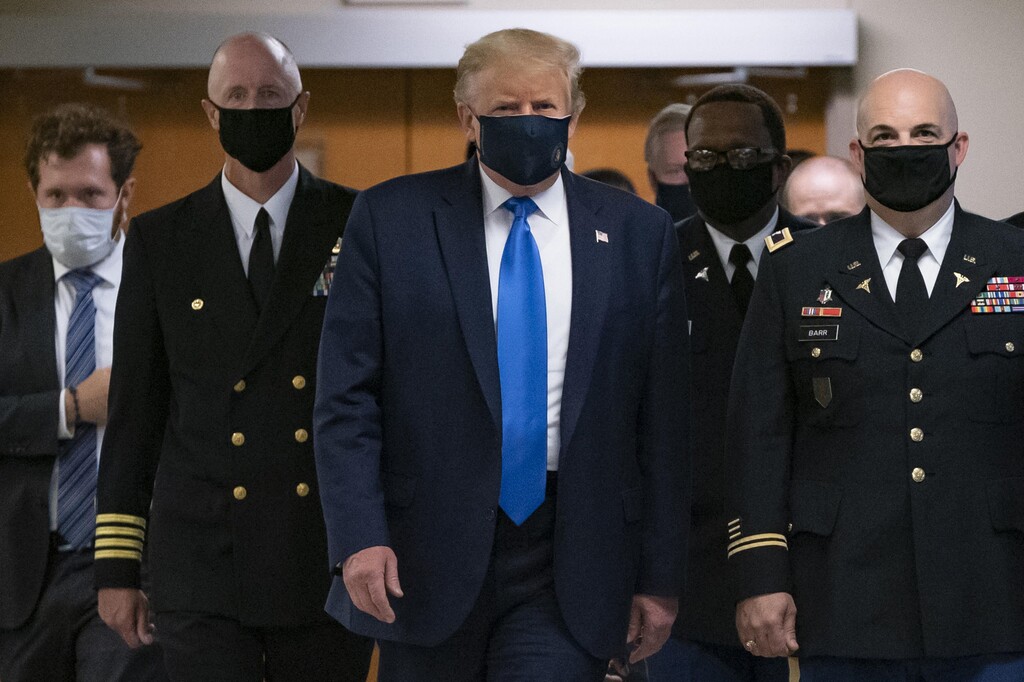

U.S. President Donald Trump wears a mask while visiting Walter Reed National Military Medical Center
(Photo: Reuters)
October 2: U.S. President Trump and his wife Melania are diagnosed as infected with coronavirus. Trump is evacuated to Walter Reed Hospital in Maryland to receive treatment, including several experimental medicines. Despite his ailment, he continues to play down the disease.
October 5: WHO announces that by its estimations, up to 10% of the world's population could have been infected with coronavirus, 20 times higher than the number of cases to date. If their estimation is correct, by that time over 760 million people have been infected.
October 18: Israel begins to exit its second coronavirus lockdown. Prime Minister Netanyahu ensures the exit strategy is calculated and slow. The Health Ministry proposes a nine-stage outline based on data and not predetermined dates, but this is later mostly scrapped.
October 28: Following a massive surge in new infections across Europe, France, the UK and Germany announce national lockdowns within a week of each other. Italy and other European nations opt for curfews and local closures.
November 3: The U.S. elections end and the United States reports a record 200,000 new daily cases.
November 9: Pfizer Inc announces its vaccine is more than 90% effective against coronavirus. Rival pharmaceutical Moderna Inc soon after announces its vaccine is 94.5% effective against the pathogen.
Both push for emergency FDA approval, but experts say that despite hopeful results, it would still take time for the vaccines to be delivered.




